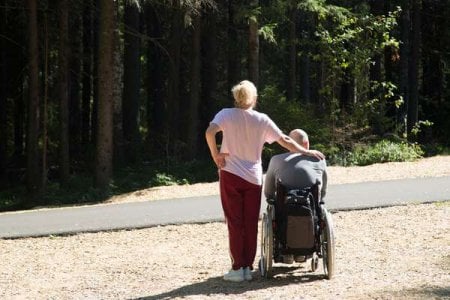Retirees Shocked: Hidden Costs in New Residential Villages Rise as You Age!
- Replies 10
The golden years should be a time of comfort and security, a period to enjoy the fruits of a lifetime of hard work. For many Australian seniors, moving into a retirement village represents a significant lifestyle change, promising community living, reduced home maintenance, and often, a range of amenities. However, a new model of retirement village contract is raising eyebrows and concerns among retirees and financial experts alike.
The traditional retirement village model has long been a subject of debate, with exit fees and other costs often catching residents off guard. But a recent development in the industry has introduced a new twist: a fee structure that increases the longer you live in the village. This has left many retirees wary of the financial implications of choosing to live in such communities, particularly those operated by TriCare.

Under contracts that commenced on July 1, new residents of TriCare villages could be charged up to a staggering 98 percent of their home's value when they decide to leave. For homes that cost around $1 million, this could mean a loss of $980,000 at the end of their stay. This is a sharp departure from the industry's standard practice, where exit fees are typically capped after a certain number of years.
The rationale behind retirement village exit fees is to keep the upfront purchase price affordable. Operators then recoup their costs through these fees when residents leave, as legislation restricts them from profiting from ongoing service fees. However, the balance is delicate, as both short-term and long-term residents can affect the profitability of the village.
TriCare's new contract appears to target those who choose to stay for an extended period. The exit fee is calculated at 3.5 percent per year, capping at 98 percent after 28 years. This is in stark contrast to the industry norm, where 86 percent of operators charge an exit fee of 35 percent or less, and most do not increase the fee after the first 10 years.
Let's consider a hypothetical scenario: Shirley, a retiree, moves into a retirement village and purchases a home for $1 million. Under the typical industry model, if she leaves within 10 years, she would pay an exit fee of 35 percent, or $350,000, leaving her with $650,000. However, if Shirley chooses a TriCare village and stays for 15 years, her exit fee jumps to 52.5 percent, costing her $525,000. After 20 years, it would be 70 percent, or $700,000. And if she stays for 28 years, she would be left with a mere $20,000 from her original $1 million investment.
This model raises serious questions about the financial viability of retirement living for seniors, especially given that Australians are living longer. While TriCare is transparent about how its contract works, the 'buyer beware' approach places the onus on retirees to fully understand the long-term financial commitments they are making.
As a member of the Seniors Discount Club, it's crucial to be informed and vigilant when considering a move to a retirement village. Here are some tips to protect your financial interests:
1. Understand the Contract: Before signing anything, thoroughly review the contract with a legal professional who specializes in retirement village agreements.
2. Consider Longevity: Reflect on your family history and personal health. If longevity runs in your family, a contract like TriCare's could be financially disadvantageous.
3. Compare Options: Look at different retirement villages and their fee structures. Some may offer more favorable terms for long-term residency.
4. Plan for the Future: Consider how the exit fees will affect your estate and any inheritance you plan to leave behind.
5. Seek Professional Advice: Always consult with a financial advisor who can help you understand the implications of the retirement village's fees on your financial situation.
The new edition of 'Downsizing Made Simple,' co-authored by Rachel Lane, offers further insights and can be a valuable resource for those considering a move to a retirement village.

We invite our readers to share their experiences and thoughts on this new fee model. Have you encountered similar contracts? How has it affected your decision to move into or out of a retirement village? Join the conversation below and let's navigate these golden years together, informed and empowered.
The traditional retirement village model has long been a subject of debate, with exit fees and other costs often catching residents off guard. But a recent development in the industry has introduced a new twist: a fee structure that increases the longer you live in the village. This has left many retirees wary of the financial implications of choosing to live in such communities, particularly those operated by TriCare.

TriCare retirement villages now have a contract where the exit fee rises with the length of stay, reaching up to 98 per cent after 28 years. Credit: Shutterstock
Under contracts that commenced on July 1, new residents of TriCare villages could be charged up to a staggering 98 percent of their home's value when they decide to leave. For homes that cost around $1 million, this could mean a loss of $980,000 at the end of their stay. This is a sharp departure from the industry's standard practice, where exit fees are typically capped after a certain number of years.
The rationale behind retirement village exit fees is to keep the upfront purchase price affordable. Operators then recoup their costs through these fees when residents leave, as legislation restricts them from profiting from ongoing service fees. However, the balance is delicate, as both short-term and long-term residents can affect the profitability of the village.
TriCare's new contract appears to target those who choose to stay for an extended period. The exit fee is calculated at 3.5 percent per year, capping at 98 percent after 28 years. This is in stark contrast to the industry norm, where 86 percent of operators charge an exit fee of 35 percent or less, and most do not increase the fee after the first 10 years.
Let's consider a hypothetical scenario: Shirley, a retiree, moves into a retirement village and purchases a home for $1 million. Under the typical industry model, if she leaves within 10 years, she would pay an exit fee of 35 percent, or $350,000, leaving her with $650,000. However, if Shirley chooses a TriCare village and stays for 15 years, her exit fee jumps to 52.5 percent, costing her $525,000. After 20 years, it would be 70 percent, or $700,000. And if she stays for 28 years, she would be left with a mere $20,000 from her original $1 million investment.
This model raises serious questions about the financial viability of retirement living for seniors, especially given that Australians are living longer. While TriCare is transparent about how its contract works, the 'buyer beware' approach places the onus on retirees to fully understand the long-term financial commitments they are making.
As a member of the Seniors Discount Club, it's crucial to be informed and vigilant when considering a move to a retirement village. Here are some tips to protect your financial interests:
1. Understand the Contract: Before signing anything, thoroughly review the contract with a legal professional who specializes in retirement village agreements.
2. Consider Longevity: Reflect on your family history and personal health. If longevity runs in your family, a contract like TriCare's could be financially disadvantageous.
3. Compare Options: Look at different retirement villages and their fee structures. Some may offer more favorable terms for long-term residency.
4. Plan for the Future: Consider how the exit fees will affect your estate and any inheritance you plan to leave behind.
5. Seek Professional Advice: Always consult with a financial advisor who can help you understand the implications of the retirement village's fees on your financial situation.
The new edition of 'Downsizing Made Simple,' co-authored by Rachel Lane, offers further insights and can be a valuable resource for those considering a move to a retirement village.
Key Takeaways
- TriCare retirement villages have introduced a new contract where the exit fee increases the longer a resident stays, up to 98% after 28 years.
- Residents who stay longer than the average of nine years could lose a significant portion of their investment, as the exit fee accumulates annually.
- Traditional retirement village contracts typically cap the exit fee accumulation within the first 10 years, but TriCare's model continues to charge beyond that period.
- This model may cost residents substantially more if they have a longer than average stay in the village, prompting a need for potential residents to be aware of the long-term financial implications.







